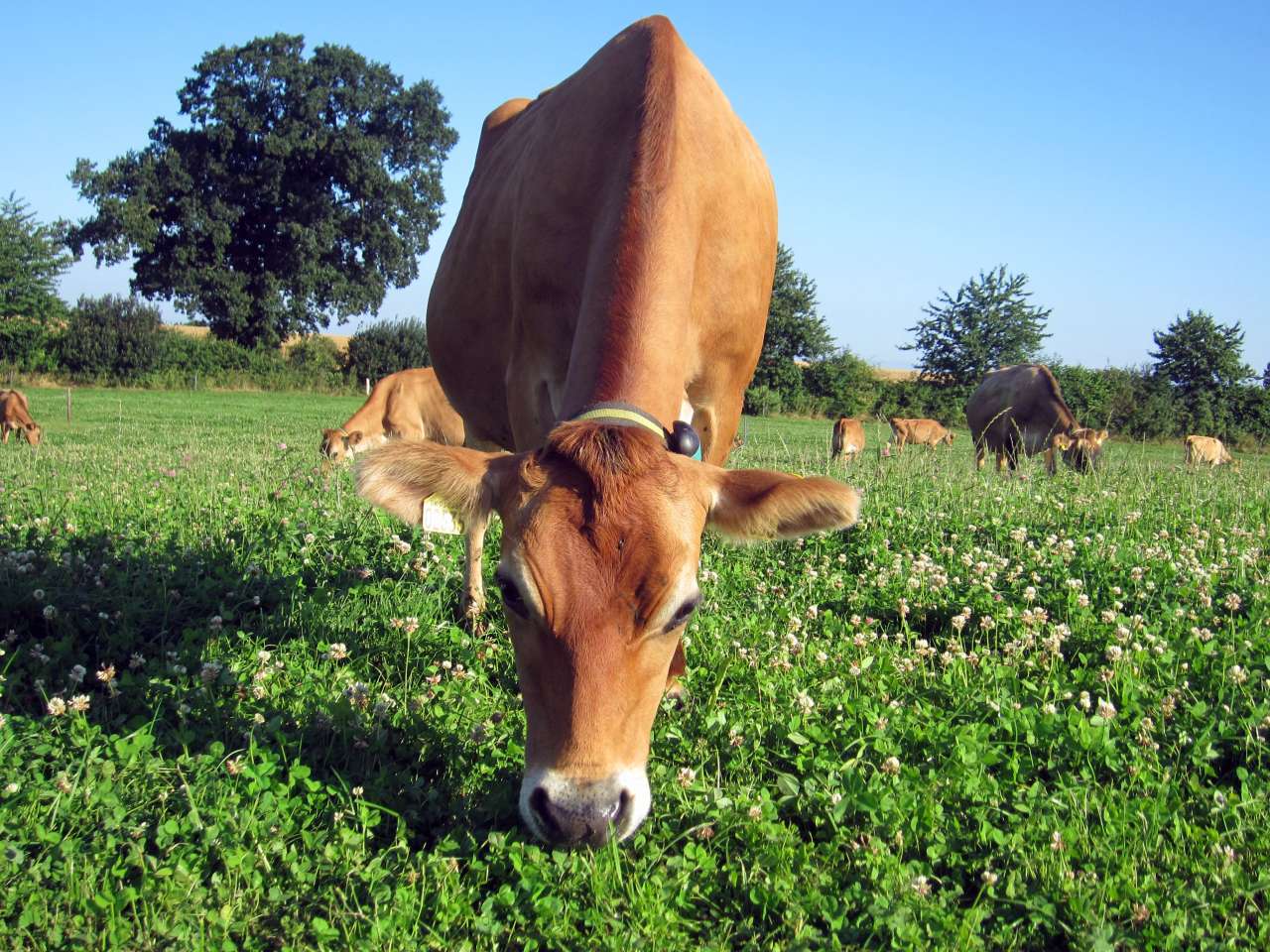WP3 Milk production

Forage and pasture based milk production
Objectives
With the major aim of improving sustainability in dairy production, the practical strategies suggested and investigated in WP3 are:
- Reducing use of human edible food and imported feed in the diets;
- Making greater use of forage and/or pasture thus reducing environmental impact.
As possible consequences of these actions, secondary objectives are:
- Reducing milk production costs;
- Improving animal health and welfare with diets more suited to rumen stability;
- Improving milk quality by enrichment with natural nutraceutical and ensuring adequate mineral supply by feeding animals with forages;
- Increasing consumers’ acceptability of milk and dairy products from production systems with greater use of local resources (forage) and reducing waste by using by-products from food and drink manufacture.
Description
Changes in management will be evaluated in a broad view considering:
- Resilience and competitiveness by identifying superior animals, able to maintain health and productivity with low-input diets and suited to forage based systems;
- Managing resources to enhance environmental sustainability while promoting on-farm practices like replacing potential food and imported protein concentrate supplementation with industrial by-products and home grown forages, including grazing legumes swards;
- Evaluating milk quality including fatty acid (FA) and mineral profiles in representative samples from the different production systems;
- Improving consumer’s acceptability and addressing societal challenges;
- Predicting GHG-emission from grazing dairy cows.
Those changes will be applied through varying levels of intensification on commercial and research farms in different countries and European regions, exploiting differences in environmental conditions, breeds and management systems.
However common records will be collected on feed intake, milk yield, health treatments, fertility and milk quality to evaluate economical and environmental sustainability of forage based systems.
Data recorded in WP3 will feed into WP4 for Sustainability assessment and synthesis.
Technical notes and public information sheets will be produced from each task for dissemination in WP5.
Task 3.1 Genotypes for low-input dairying (UNEW)
This task starts with analysis of and modelling an existing data-set on animal health, milk production and quality from over 1000 cross-breed dairy cows, collected 4 times throughout 2012-13 from 17 low-input UK dairy farm in the Nafferton Ecological Farming Group (NEFG) dairy producer network, covering a wide range of contrasting breeds and breeding approaches. Then, as with task 2.4, UNEW will work with the PFLA in a participatory approach to evaluate variation (and hence scope for selection) between individual dairy cows in grazing/forage only production systems – assessing their ability to convert forage into milk. As well as common records, estimates will be made of grazing intakes (using Rumiwatch halters), herbage yield and quality, including mineral composition.
Task 3.2 Breed, forage quality and cows’ yield (IGAB)
80 multiparous lactating cows (Polish Holstein Friesian and Simmental) will be involved in a 2×2 factorial experiment to determine the effects of pasture quality (traditional and reseeded grassland) and concentrate supplementation level on metabolic burden, yield, nutritional and cheese making characteristics of milk. As well as common records, pasture performance will be monitored on newly established grass/clover sward considering grass and silage energy concentrations as well as fatty acids vitamins and mineral profiles. Individual milk and blood samples will be collected every 2 months for 24 months – with genotyping to identify SNIPS for β–LG and CASK to assess coagulation process and potential cheese making efficiency.
Task 3.3 Forage based dairying in Northern Europe (NIBIO)
We will access data on 30 dairy farms from the National dairy herd recording systems in Norway (TINE SA, The Norwegian Dairy Association, Ås, Norway), reporting economic performance in addition to feeding and production information. Farms will represent different production system and concentrate supplementation level. Using farm specific data, we will model the impact of changing feeding practice by a) reducing the proportion of concentrate supplement, b) replacing edible feed with by-products and/or c) using only domestic produced feedstuff. The feed optimizing program 'Optifôr' (TINE SA), based on the Nordic feed evaluation system, will estimate milk yield, feed nitrogen utilization and enteric methane emissions
Task 3.4 Forage based Mediterranean dairying (UP)
Responsible: Flaviana Gottardo
Aim of the task is to assess the feasibility of increasing the use of high quality home grown hays as an alternative to the unpredictable maize production and quality, in association with the identification of more resilient animals:
- A first assessment will be done analyzing existing records on individual animals for health and fertility, milk yield and quality, on farms with different management systems (50 farms), identifying also potential alternative breed×feeding combinations
- A sub-sample of farms that use high quality forage (lucerne and grass hay, food by-products), as an alternative to maize silage, will be subsequently monitored (productivity, health and fertility)
- Milk, produced under these conditions, will also be evaluated by infrared spectroscopy – aiming to develop an easy traceability procedure
Data from the systems’ comparison investigated in Italy will be submitted to WP4, for economic analysis and environmental assessment considering different rearing systems adopted across European countries.
Task 3.5 Grazing clover-grass for low–input dairy (CAU)
We will compare the effect of botanical sward composition on the milk yield and quality, animal health and environmental effects of 84 spring calving Jersey cows. To do so, we have established three different pasture systems with increasing sward complexity: the most common and simple mixture is a binary mixture of white clover and perennial ryegrass, with the intermediate mixture consisting of white clover, red clover and perennial ryegrass and the most complex mixture including additionally birdsfoot trefoil and four herb species.
The increasing complexity also entails an increase in chemical diversity, with red clover being known for its natural content in polyphenol oxidase (PPO), and birdsfoot trefoil and some of the forage herbs containing condensed tannins and other polyphenols. These compounds are hypothesized to increase nutrient efficiency and reduce environmental effects. Accordingly, besides milk quality and quantity, we will also measure nitrate leaching and N2O emissions, as well as enteric methane emissions to identify potential of forage mixtures to increase the sustainability of milk production from pastures. The latter will be tested both in vitro, using the Hohenheim gas test, and in vivo with the SF6 tracer technique. To contribute to the life cycle analysis in WP 4.3, also the energy demand for the milk production and nitrogen fixing potential of the legumes will be assessed on a farm and field level, respectively.
Finally, the effect of concentrate supplementation on production and environmental indictors will be tested in three subgroups of cows. The cows are fed a daily allowance of either 0.5, 2.0 or 3.5 kg of homegrown concentrate per cow during the first half of the lactation.

Leader
Participants

